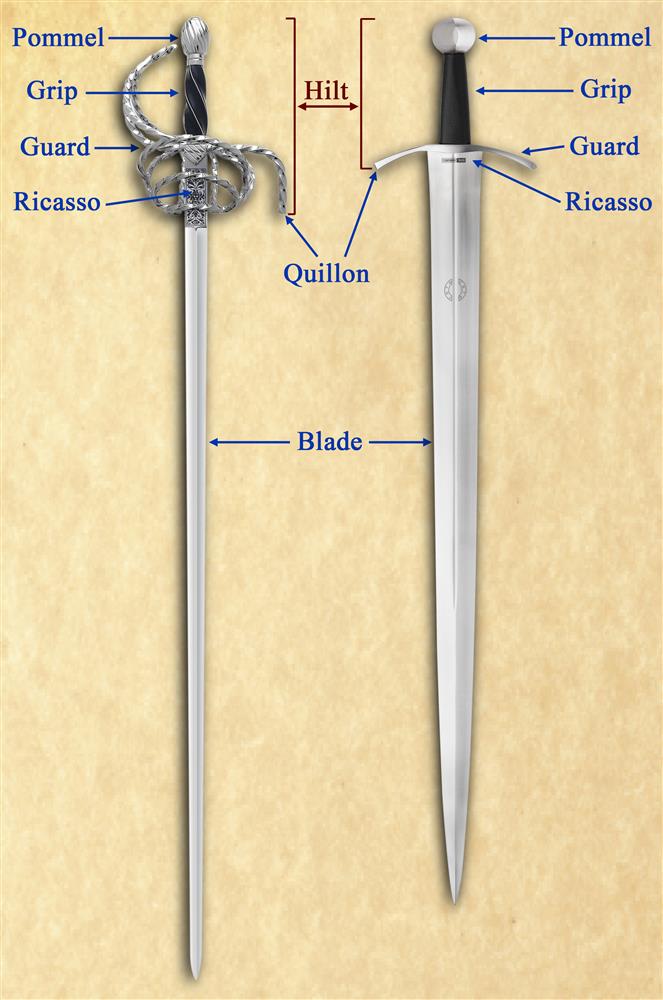WELCOME!
sign* up to our newsletter
to get 10% Off on your next purchase

Pommel: The knob-like, butt end of a sword that holds the handle together. The pommel is appropriately sized to provide the proper counterweight to the blade to enhance balance and maneuverability. The pommel may be secured by "peening" (which means that part of the Tang is extended past the pommel and hammered flat to overlap the pommel) or screwed tight with a nut on a threaded tang. Sometimes erroneously called a "pummel" (remember this little ditty: you can pummel with a pommel, but you can't pommel with a pummel).
Tang: The part of the blade that is inserted into the grip. The proper construction of the tang is critically important to make a sword fully functional. On a battle-worthy sword, the tang is wide and a continuous part of the blade, not a seperate, welded-on piece.
Grip: Extensive research has revealed that this part of the sword is called the grip because... this is where you grip the sword. Grips may be made of wood, metal and on modern swords, plastic (which is actually a great material because it's dimensionally stable, impervious to moisture, and isn't affected by temperature). Some grips are wood covered with leather or wire-wrapping, some grips are cast or carved metal. On traditional Japanese swords, the grip is wood, wrapped in Rayskin, and overwrapped with cotton, silk or leather cord.
Create Your Own Sword with Museum Replicas
One-handed swords were first developed by the Celts of northern Europe and the British Isles, who fought from horseback. Similar longer bladed swords were quickly adopted by the Romans in the form of the Spatha which was used by their mounted troops.
The term hand-and-a-half is more a modern designation for a range of sword types that featured tapered blades longer than the standard shorter arming swords of the time but without the double-hand grips of larger, heavier war-swords.
Two-handed swords were known as war-swords in the early Middle Ages and used to destroy an opponent’s shield, shear through mail, and damage helms. They were called great swords during the High Middle Ages and the Renaissance.
Short swords have seen usage throughout history, from the Legionnaires to Renaissance squires and pirates. In ancient armies, short swords and large shields were a standard armament of the soldiers who fought against the long sarissa pikes of phalanxes. Limitations of copper, bronze, and iron regulated blade length at first. Later, the swords developed across many cultures leading to different types and shapes.
The term “rapier” comes from the Spanish term espada ropera or “sword of the robes,” meaning they were primarily civilian weapons.
You cannot talk about Japanese history without mentioning the elite Samurai Warrior. Experts at fighting both on horseback and the ground, the Samurai lived by a strict code of ethics. Instilled with "freedom from fear", they trained rigidly and were considered an aristocratic warrior class.